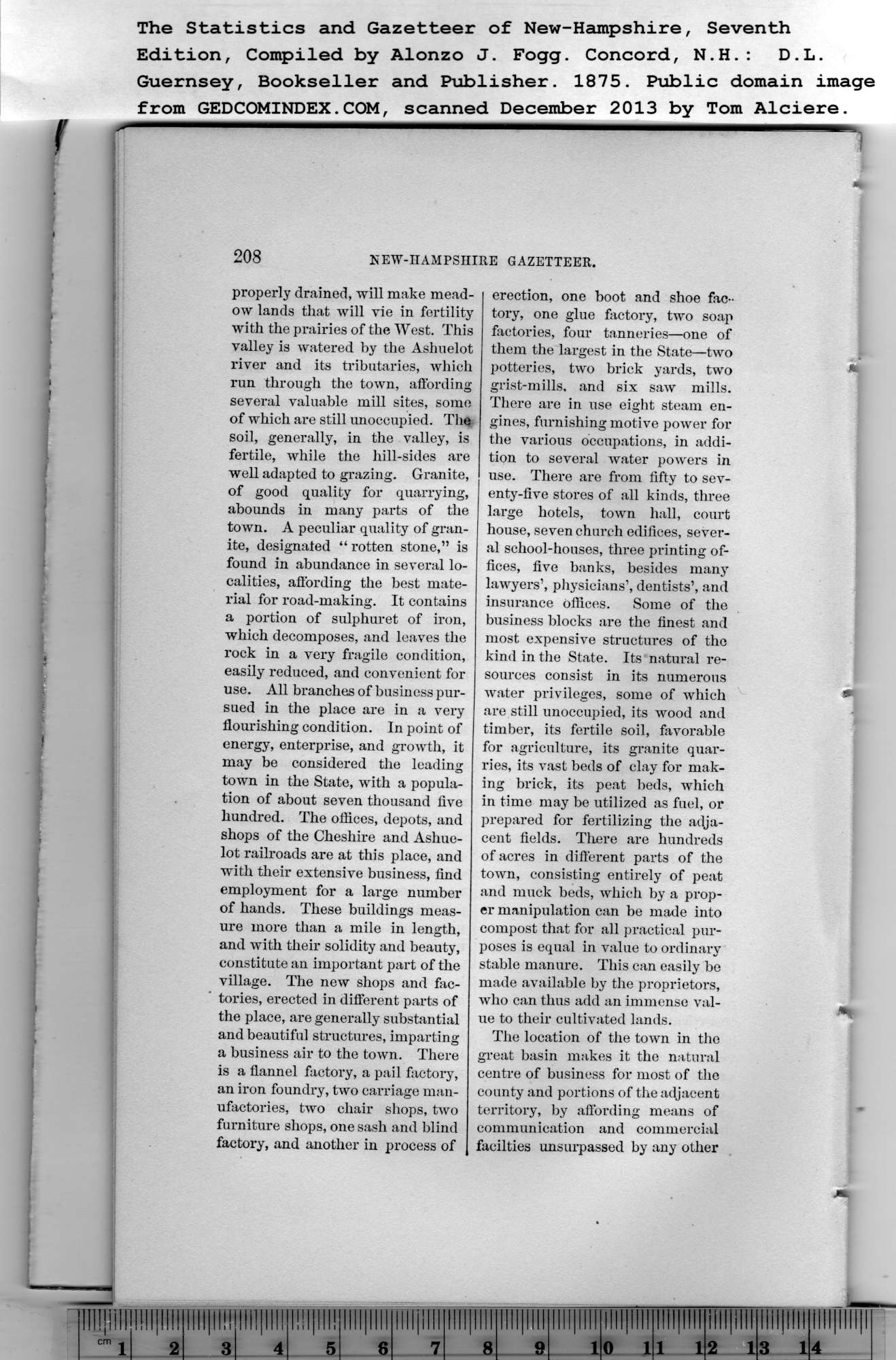|
properly drained, will make mead-
ow lands that will vie in fertility
with the prairies of the West. This
valley is watered by the Ashuelot
river and its tributaries, which
run through the town, affording
several valuable mill sites, some
of which are still unoccupied. The
soil, generally, in the valley, is
fertile, while the hill-sides are
well adapted to grazing. Granite,
of good quality for quarrying,
abounds in many parts of the
town. A peculiar quality of gran-
ite, designated “ rotten stone,” is
found in abundance in several lo-
calities, affording the best mate-
rial for road-making. It contains
a portion of sulphuret of iron,
which decomposes, and leaves the
rock in a very fragile condition,
easily reduced, and convenient for
use. All branches of business pur-
sued in the place are in a very
flourishing condition. In point of
energy, enterprise, and growth, it
may be considered the leading
town in the State, with a popula-
tion of about seven thousand five
hundred. The offices, depots, and
shops of the Cheshire and Ashue-
lot railroads are at this place, and
with their extensive business, find
employment for a large number
of hands. These buildings meas-
ure more than a mile in length,
and with their solidity and beauty,
constitute an important part of the
village. The new shops and fac-
tories, erected in different parts of
the place, are generally substantial
and beautiful structures, imparting
a business air to the town. There
is a flannel factory, a pail factory,
an iron foundry, two carriage man-
ufactories, two chair shops, two
furniture shops, one sash and blind
factory, and another in process of
erection, one boot and shoe fac-
tory, one glue factory, two soap
factories, four tanneries—one of
them the largest in the State—two
potteries, two brick yards, two
grist-mills, and six saw mills.
There are in use eight steam en-
gines, furnishing motive power for
the various occupations, in addi-
tion to several water powers in
use. There are from fifty to sev-
enty-five stores of all kinds, three
large hotels, town hall, court
house, seven church edifices, sever-
al school-houses, three printing of-
fices, five banks, besides many
lawyers’, physicians’, dentists’, and
insurance offices. Some of the
business blocks are the finest and
most expensive structures of the
kind in the State. Its natural re-
sources consist in its numerous
water privileges, some of which
are still unoccupied, its wood and
timber, its fertile soil, favorable
for agriculture, its granite quar-
ries, its vast beds of clay for mak-
ing brick, its peat beds, which
in time may be utilized as fuel, or
prepared for fertilizing the adja-
cent fields. There are hundreds
of acres in different parts of the
town, consisting entirely of peat
and muck beds, which by a prop-
er manipulation can be made into
compost that for all practical pur-
poses is equal in value to ordinary
stable manure. This can easily be
made available by the proprietor's,
who can thus add an immense val-
ue to their cultivated lands. |
The location of the town in the
great basin makes it the natural
centre of business for most of the
county and portions of the adjacent
territory, by affording means of
communication and commercial
facilties unsurpassed by any other |
